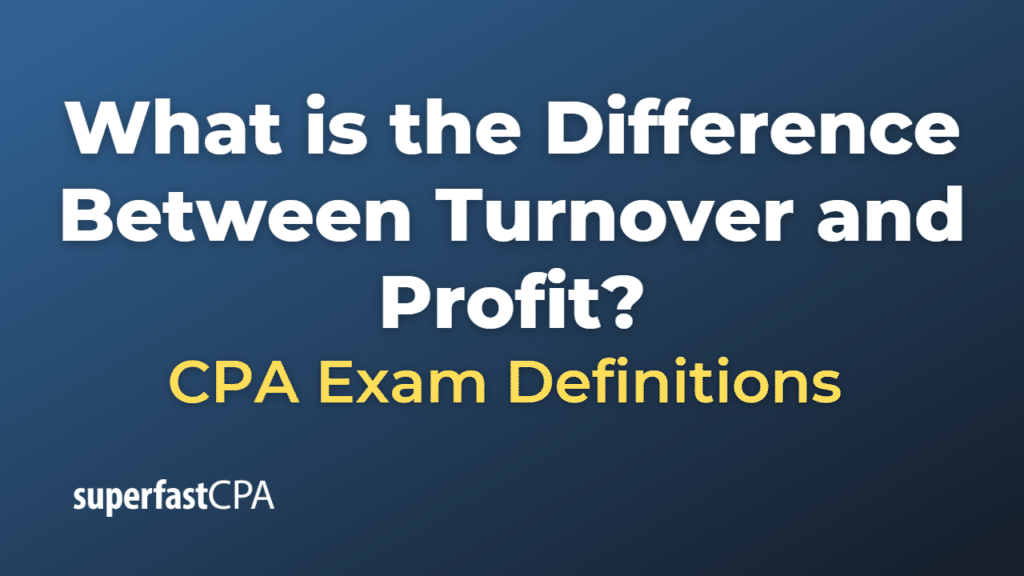Difference Between Turnover and Profit
Turnover and profit are both important financial metrics for a business, but they represent different aspects of a company’s performance:
- Turnover:
Turnover refers to the total sales generated by a business within a specific period. It’s the gross revenue that a company earns from its normal business operations – typically selling goods and services. Turnover does not take into account any costs or expenses incurred by the business. It’s also known as sales revenue or gross revenue. - Profit:
Profit, on the other hand, is what remains after all costs and expenses associated with those sales are deducted from the turnover. These costs might include the cost of goods sold (COGS), operating expenses, taxes, interest on debt, and other expenses.There are different types of profit, each considering different sets of expenses:- Gross profit is turnover minus the cost of goods sold (COGS).
- Operating profit (or EBIT) is gross profit minus operating expenses.
- Net profit (or net income) is operating profit minus interest and taxes.
In summary, turnover represents the total sales made by a company, while profit shows what portion of the sales is actual earnings after deducting the costs and expenses. Both are important: turnover indicates the scale and market impact of a company’s operations, while profit indicates the company’s efficiency and financial health.
Example of the Difference Between Turnover and Profit
Let’s consider an example for a hypothetical company, BestTech Inc., over a specific fiscal year:
- Turnover: Suppose BestTech Inc. sold 10,000 units of its product at $100 each. The turnover (or sales revenue) for the fiscal year would be 10,000 units * $100/unit = $1,000,000.
- Profit: To calculate profit, we need to subtract the costs associated with making those sales. Let’s say:
- The Cost of Goods Sold (COGS) – the direct costs attributable to the production of these goods sold by the company – is $400,000.
- Operating expenses – such as rent, salaries, utilities, etc. – amount to $200,000.
- Interest on business loans amounts to $50,000.
- Taxes amount to $70,000.
Let’s compute the different levels of profit:
- Gross profit would be Turnover – COGS = $1,000,000 – $400,000 = $600,000.
- Operating profit would be Gross profit – Operating expenses = $600,000 – $200,000 = $400,000.
- Net profit (Net Income) would be Operating profit – Interest – Taxes = $400,000 – $50,000 – $70,000 = $280,000.
So, in this example, BestTech Inc. had a turnover of $1,000,000 and a net profit of $280,000 for the fiscal year. This shows that, while the company earned $1,000,000 in sales, only $280,000 of this amount was actual earnings once all costs and expenses were accounted for.













